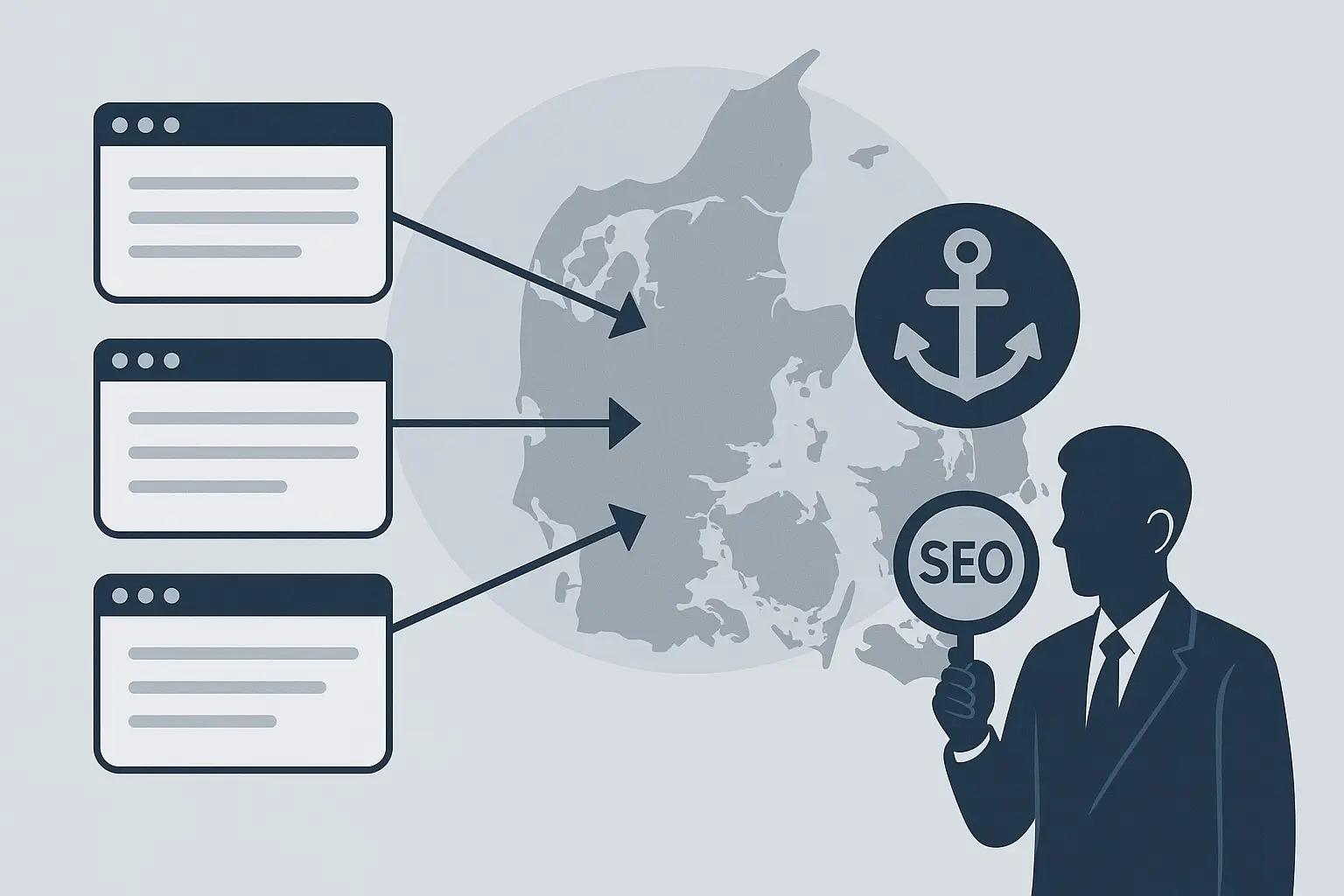What's the difference?
What's the difference and what's best for your link profile and therefore your visibility in organic search results? As a starting point, a text link, i.e. text that is marked and made into an active hyperlink, is stronger than an image link.
Furthermore, the ability to confirm what the content is about is significantly stronger with a text link. This is because Google can read and understand text much better than images.
Text Links
Strength: High✓ Advantages:
- • Stronger SEO signal
- • Clear anchor text
- • Better for keyword targeting
- • Google recommends for internal navigation
⚠ Disadvantages:
- • Less visually appealing
- • May be less clickable
<a href="https://example.com">Link building guide</a>Image Links
Strength: Medium✓ Advantages:
- • Visually appealing
- • Higher click-through rate
- • Natural part of link profile
- • Good for brand awareness
⚠ Disadvantages:
- • Weaker SEO signal
- • Dependent on alt text
- • Google can't 'see' the image
<a href="https://example.com"><img src="guide.jpg" alt="Link building guide"></a>Why Text Links Are Stronger
Text links are the strongest link type
Text links give Google the clearest indication of what the linked page is about. The anchor text functions as a direct description of the destination's content.
Advantages of text links:
- • Clear relevance: Anchor text describes precisely what the link leads to
- • Keyword targeting: Ability to use specific keywords in anchor text
- • Stronger SEO signal: Google weights text links higher than image links
- • Better crawling: Easier for Googlebots to understand and follow
Example of strong anchor text:
<a href="https://example.com/link-building-guide">complete link building guide</a>Here Google clearly understands that the destination is about link building guides.
How Image Links Work
With an image link, you use the alt text to tell what a link points to, or what it represents. You can also use the title tag as a kind of anchor text, but studies show that alt text is a stronger indicator than title tag.
Anatomy of an image link:
<a href="https://linkbuildingbogen.dk/en/guide">
<img src="linkbuilding-book.jpg"
alt="Linkbuildingbogen - complete guide to SEO links"
title="Read the Link Building Book">
</a>Alt text (most important):
Used as "anchor text" for image links. Google reads this text to understand the link's context.
Title tag (secondary):
Supplement to alt text, but weighted less by Google.
Same principle as image SEO
The scenario is the same when you work with optimizing images for on-site SEO. Google reads code and therefore doesn't look at images to assess what's in them.
Google's Official Guidelines
Search Engine Optimization Starter Guide
Google explains in their 'Search Engine Optimization Starter Guide' that you should use text links for your internal navigation.
This is precisely because it makes it easier for Google to decode what the different pages are about.
Why Google prefers text links:
- • Better crawling: Googlebots can read text directly
- • Contextual understanding: Anchor text provides precise information about destination
- • Indexing: Text links make it easier to categorize content
- • User experience: Text is more accessible for screen readers
OCR technology and the future
That Google is continuously working to become better at decoding images with OCR technology is a completely different conversation. But right now, Google primarily reads code, not images.
Natural Link Profile Distribution
Image links belong in a natural link profile
But you shouldn't avoid image links, because image links belong in a natural link profile with reasonable diversity. Often there will be a much smaller amount of image links than text links, as this is the natural distribution.
Typical distribution in a healthy link profile:
Important to know
Link profiles where image links make up more than 10% of the total amount of links are very rarely seen. If you therefore have an abundance of people linking to you through an image, you can advantageously ask them to change it to text links.
Best Practices and Recommendations
Do this
- • Prioritize text links for internal navigation
- • Use descriptive anchor text
- • Optimize alt text on image links
- • Maintain natural distribution (85-90% text)
- • Ask partners for text links when possible
Avoid this
- • Too many image links (>15%)
- • Missing alt text on image links
- • Generic anchor text ("click here")
- • Only image links to important pages
- • Ignoring link diversity
Henrik Bondtofte's recommendation:
But otherwise you should let them remain in their current form. A natural mix of link types looks more organic to Google and creates a healthier overall link profile.
Practical Implementation Tips
For text links:
- • Use varied anchor text (not always the same keyword)
- • Include natural variations ("link building guide", "guide to links")
- • Keep anchor text between 2-6 words
- • Ensure anchor text matches destination content
For image links:
- • Write descriptive alt text that describes the destination
- • Include relevant keywords in alt text (but naturally)
- • Use title tag as supplement (not replacement)
- • Optimize image size for faster loading
Monitoring and optimization:
- • Use SEO tools to analyze your link profile
- • Check the distribution between text and image links
- • Identify opportunities to convert image links to text links
- • Track performance of different link types
Want to learn more about link profile optimization?
You can read much more about different forms of links and their effect on your link profile and thus your website's visibility in organic search results in the full version of the Link Building Book.
Read the Link Building Book